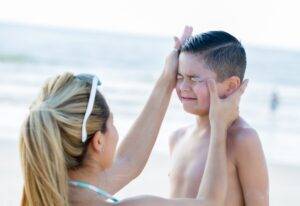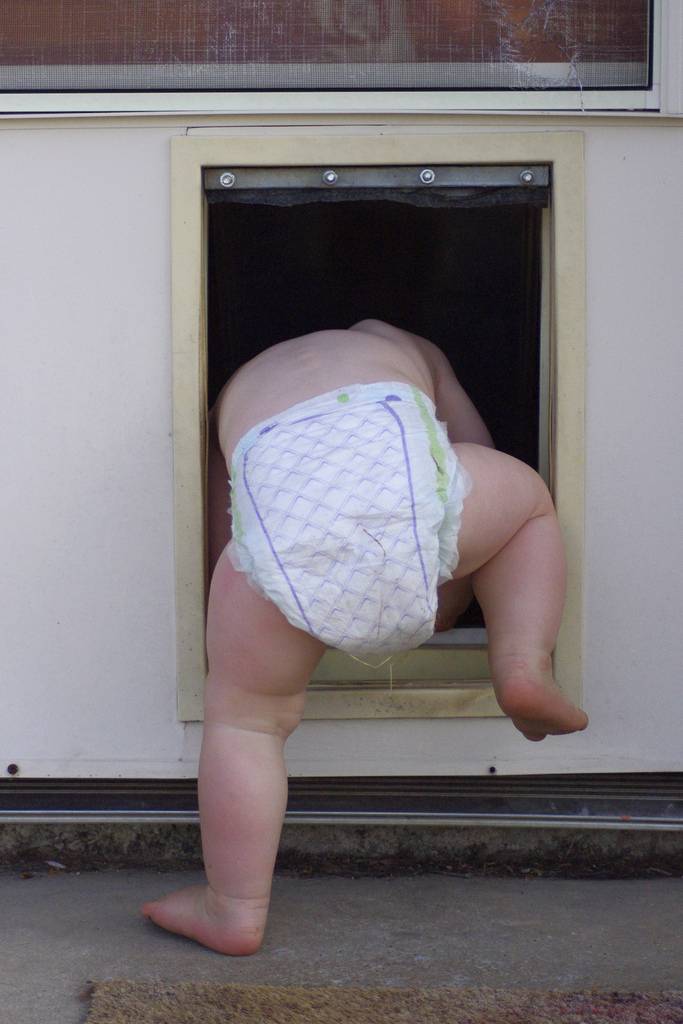Table of Contents
The sun shines brightly throughout the summer months. It’s time for outdoor fun for the whole family. The ultraviolet (UV) radiation may have damaging effects on your child’s skin. Hence, it’s extremely important to prioritize giving your child sun protection.
Know what to look for when selecting sunscreen products for optimal sun protection for your child’s skin. You can also consider implementing some safety measures.
As much as we want kids to enjoy the sun in the summer, we at Omega Pediatrics don’t want your child’s skin to suffer from painful sunburns, so prevent these from happening before they get worse.
Sunscreen Labels: What They Mean
The sunscreen labels aren’t always the same for all products. For the best protection possible for your child’s skin, select the product with the correct composition. Carefully read the label and look into the following factors when choosing to protect your child’s skin:
Broad-Spectrum Protection
Choose sunscreens labeled “broad-spectrum”, “photostable”, or “with broad-spectrum stability” to protect your child’s skin from both UVA and UVB rays. These components help your child prevent sunburn and premature aging and reduce the risk of skin cancer.
 Sun Protection Factor (SPF)
Sun Protection Factor (SPF)
Choose a sunscreen with a minimum SPF of 30 or higher to ensure effective protection against UVB rays. SPF 30 filters approximately 97% of UVB rays. Higher SPF provides more protection, but there’s no such thing as 100% sun protection.
Let your kids reapply the sunscreen every two hours, or more frequently if swimming or sweating. Check your child’s skin to see if it looks flaky or excessively dry, especially during continuous sun exposure. It’s time to reapply the sunscreen.
SPF Broadness
Look for sunscreens with an SPF that covers a wide range of wavelengths, ideally from 290 to 400 nm. This indicates a broader coverage of UV radiation to provide the maximum protection possible for your child’s skin. It covers both UVA and UVB rays.
Active Components
Active ingredients, like avobenzone, titanium dioxide, or zinc oxide. in the sunscreen are helpful since these absorb or reflect the sun’s rays. These provide an extra layer of protection against UVA and UVB rays for your child’s skin.
Skin Sensitivity
If your child has a history of allergic reactions, skin sensitivities, or skin diseases, look for sunscreens specifically formulated for sensitive skin. This is important to consider to avoid adverse reactions during application to your child’s skin.
There are sunscreens labeled as ‘good for sensitive skin’ that are generally more gentle than regular sunscreens. This helps reduce the likelihood of redness, itching, and stinging when applying sunscreen to your child’s skin.
Water Resistance
If your child is immersed for a longer time in the water, such as swimming or any water activities, or will be sweating a lot, opt for a water-resistant sunscreen for longer-lasting protection. Ensure to reapply after toweling off or excessive sweating.
Non-Comedogenic and Fragrance-Free
Your child may be acne-prone or have sensitive skin. If this is the case, select a sunscreen labeled “non-comedogenic” to prevent clogged pores and skin breakouts. Also, opt for fragrance-free sunscreens to minimize skin irritation or allergic reactions.
Expiration Date
Always check the expiration date on the sunscreen label to ensure its effectiveness. Expired sunscreens may provide inadequate protection, increasing the risk of sunburn and skin damage.
Sun Safety Measures: Keep Your Child’s Skin Safe from the Sun
You can protect your child’s skin and ensure they have a fun and sun-safe experience by following these tips:
1. Seek Shade if Possible
When the sun is strongest between 10 a.m. and 4 p.m., find a shady spot for your child to play. Look for shade from trees, canopies, sun shelters, or umbrellas. These shades protect them from harmful rays and reduce sunburn and heat-related illnesses.
2. Keep Hydrated at all Times
Encourage them to drink plenty of fluids, especially water, to avoid dehydration. During sun exposure, body fluids are drawn to the skin’s surface and away from the body, causing dehydration.
The remedy is to offer water frequently, even if your kid isn’t thirsty. Keeping hydrated is important to replace lost body fluids and replenish electrolytes.
3. Dress in Sun-Protective Clothing
Choose lightweight, loose-fitting garments that cover as much of your child’s skin as possible. Long-sleeved shirts and pants are good choices to avoid sunburn. Look for clothes with a UPF rating for better sun protection.
4. Use Sunglasses
Make sure your child wears sunglasses that block 100% of UV rays. Find ones that meet the UV protection requirements. UV rays can harm eyes in the long run, so wear sunglasses outside, especially on bright days. Alongside protecting your eyes, consider sun visors, too.
5. Use Sun-Protective Accessories
Along with sunscreen and protective clothing, use accessories for extra sun protection. Use umbrellas and wide-brimmed hats. Scarves and shawls can also help. These add protection against direct sunlight and lower the risk of sunburn and overheating.
6. Be Mindful of Medications
Some medications increase sun sensitivity. If taking any, ask your child’s healthcare provider about sun sensitivity. They will recommend precautions like more sun protection or avoiding prolonged sun exposure.
7. Educate on Sun Safety

Teach your child to stay safe when they’re out in the sun. Explain to them why protecting from the sun is important, the risks of sunburn, and the long-term effects of sun exposure. Also, show your kids how to apply sunscreen properly.
Imbibe in your kids early to develop lifelong sun safety habits.
8. Plan Outdoor Activities
Consider the extent of sun exposure when planning outdoor activities. Schedule early morning or late afternoon when the sun is less intense. Check the UV index in the weather forecast. Enjoy being outside while reducing sun exposure during peak hours.
9. Lead by Example
Be a good role model by practicing sun protection habits. When children see you taking sun protection seriously, they’re more likely to do the same and develop sun-safe habits. Show them how important sun safety is.
What Happens When Your Kid Gets Sunburned?
Sunburn is a common consequence of excessive or prolonged sun exposure that can cause various health manifestations. Recognizing the indicators of sunburn is important for timely intervention and ensuring your child’s well-being.
Symptoms of Sunburn in Children
When a child gets sunburned, it gets uncomfortable with different symptoms. The most common signs of sunburn include red, tender, and swollen skin. The skin appears tight. The sunburned area feels warm and hurts, especially if touched or rubbed, and also has itchiness.
Sometimes, sunburn can have more serious symptoms. Blisters can form on the skin’s surface, which are filled with fluid and can be very painful. If they break open, it increases the risk of an infection.
Sunburn also causes general symptoms, such as feeling tired, headaches, or even fever, especially if the sunburn is extensive on numerous skin areas.
Prolonged Effects Of Sunburn
Although sunburn usually goes away after some time, getting sunburned repeatedly or badly can have long-term effects on the skin, especially in children. Sunburn damages the DNA of your child’s skin cells, which can lead to lasting consequences.
- Skin Cancer
There’s an increased risk of getting skin cancer when your child gets older. This is especially true if your child gets sunburned multiple times! That’s why it’s important to protect your kids at a very young age to lower their risk of skin cancer as they grow up.
- Aging
Your child’s skin manifests hastened aging—looking older earlier. Some noticeable signs include wrinkles, lines, spots, and uneven skin texture. This is especially concerning when these signs show up at a young age since the damage adds up over time.
- Changes in Skin Color
The sunburned areas become darker or lighter than the rest of the skin, creating an uneven skin tone. While these color differences may fade with time, they can stick around for a while—or even permanently. This may affect your child’s self-confidence.
What to do if Your Child has Sunburn
When your child experiences sunburn, take immediate action to soothe their skin to hasten healing. Sunburn can be painful and uncomfortable. But with the correct remedy, you can provide relief and aid your child’s recovery process.
1. Cool the affected areas.
For immediate relief, apply cool compresses to the sunburned areas. You can also let your child have a cool bath or shower, that is, rinsing off the burning skin. Avoid using ice or very cold water, as it can further damage the skin.
2. Moisturize the skin.
Gently apply a moisturizer or aloe vera gel to soothe the sunburned skin. Moisturizers have a calming effect on irritated skin by keeping moisture in. Generally, they come in creams or lotions. They keep the skin as moisturized as possible to aid in recovery.
Ensure that you apply moisturizer after the skin has cooled off and is still wet. If not, the heat will be trapped, causing more pain and inflammation.
3. Don’t pop the blisters.
If blisters develop, don’t let your child pop them. If it’s popped or breaks open, it increases the risk of infection. Let them heal naturally.
When to Consult Your Child’s Pediatrician
When your child experiences severe sunburn with symptoms such as high-grade fever, extreme pain, or signs of infection, seek help from your child’s primary healthcare professional for further evaluation and assessment.
If you’re looking for a pediatrician to treat your child’s sunburn, consider Omega Pediatrics. We’ll help your child recover soon so he can enjoy more summer play.
Let Your Kids Enjoy Summer Without Sunburn

As summer arrives and brings with it the warm sunshine, protect your child’s skin from the harmful effects of UV rays.
We at Omega Pediatrics truly care for your little ones as much as you do. By following the guidelines presented above, we can ensure that your child stays safe and enjoys the summertime without the discomfort of sunburn.
With your provider at Omega Pediatrics, let’s work together to create a summer filled with fun and memories while keeping our children’s skin healthy and protected!
FAQ
What should I look for when choosing sunscreen for my child?
Look for broad-spectrum protection, SPF 30 or higher, water resistance, and active ingredients like avobenzone or zinc oxide. Consider your child’s skin sensitivity and any allergies when selecting a sunscreen.
How often should sunscreen be reapplied on my child’s skin?
Sunscreen should be reapplied every two hours, or more frequently if swimming or sweating. Check your child’s skin for signs of dryness or flakiness during prolonged sun exposure, indicating the need for reapplication.
What are some sun safety measures to protect my child’s skin?
Seek shade during peak sun hours, keep hydrated, dress in sun-protective clothing, use sunglasses and sun-protective accessories, be mindful of medications that increase sun sensitivity, educate your child on sun safety, plan outdoor activities during less intense sun hours, and lead by example.
What are the symptoms of sunburn in children?
Symptoms of sunburn in children include red, tender, swollen skin, tightness, warmth, pain upon touch, itchiness, and sometimes blistering. Sunburn may also cause general symptoms like fatigue, headaches, or fever.
What should I do if my child gets sunburned?
To soothe sunburned skin, cool the affected areas with cool compresses or baths, moisturize the skin with aloe vera gel or moisturizer, and avoid popping blisters. Seek medical attention if your child experiences severe symptoms like high fever, extreme pain, or signs of infection.



